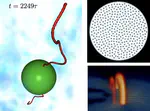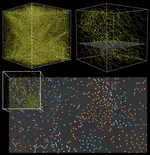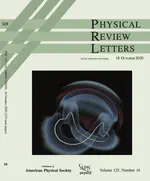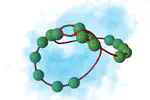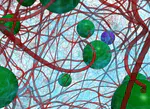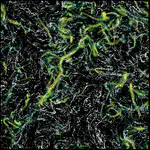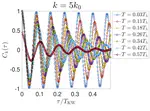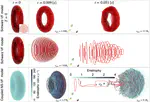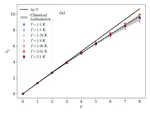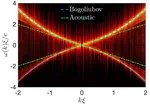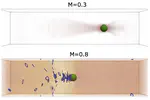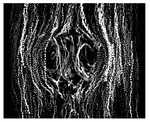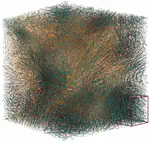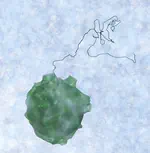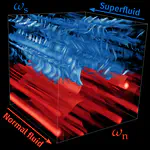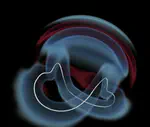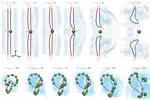ANR GIANTE
LaGrangian propertIes and universAlity of quaNtum turbulencE
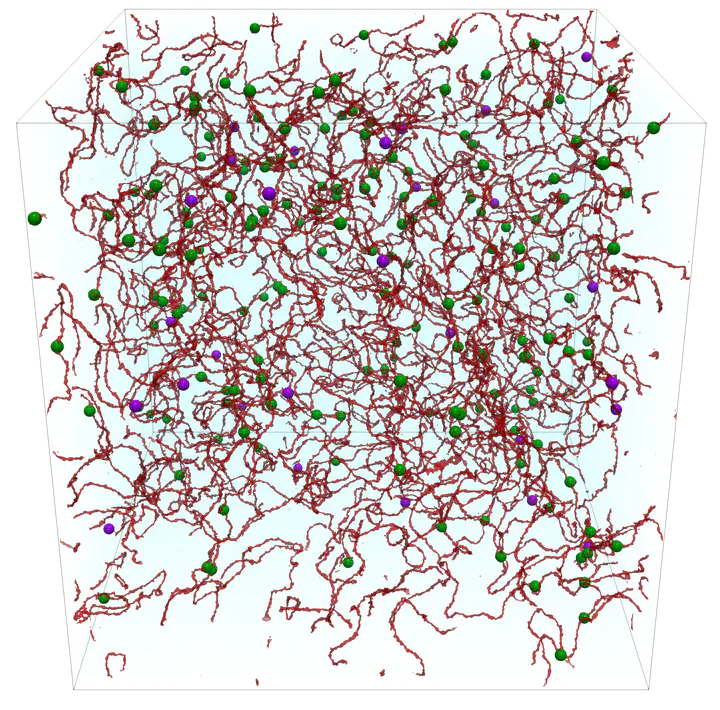 A Gross-Pitaevskii simulation model of a turbulent quantum tangle with a number of active particles. This work will appear in Physical Review Fluids.
A Gross-Pitaevskii simulation model of a turbulent quantum tangle with a number of active particles. This work will appear in Physical Review Fluids.
Hydrodynamic turbulence is considered as a prototype of systems far from equilibrium. Its phenomenological description relies on Richardson and Kolmogorov’s idea that energy cascades through scales. In many complex flows, Kolmogorov turbulence appears to be valid within a reduced range of scales. Out of this range, energy is carried along scales thanks to different physical processes like the interaction of coherent structures and non-linear waves. This is the case of quantum turbulence, that is observed in superfluids like 3He and 4He, Bose-Einstein condensates (BEC) made of dilute alkaline gases and even in optical non-linear systems with the so-called quantum fluids of light. Quantum turbulence is a non-equilibrium phenomenon that involves processes with a large spatial and temporal scale separation. The most manifest quantum effect in superfluid turbulence is the presence of quantum vortices, whose circulation is quantised.
During the last decade, thanks to the development of new experimental technics, quantum vortices have been successfully visualised in superfluids. It is now possible to study vortex dynamics in BEC and superfluid helium. Using particles to sample the flow, some differences between classical and quantum turbulence have been enlightened. However, despite this progress, experimental techniques are not yet able to simultaneously sample and excite all the scales of quantum turbulence. Many fundamental questions are still open in this kind of systems.
The goal of this project is to study the dynamics of particles in superfluids and their interaction with vortices mainly focussing on the physical phenomena laying at the crossover between classical and quantum regimes. It brings standard tools used in the theoretical description of classical turbulence to the quantum case. For that purpose, it borrows tools from statistical mechanics and non-linear physics while using state-of-the-art techniques in computational fluid dynamics. To that extent simulations of the Gross-Pitaevskii model and the Hall-Vinen-Bekharavich-Khalatinikov model are being performed. We also address the dynamics of particles by using different models.
In particular, this proposal aims at determining how well particles sample superfluid vortices and how important is their interaction with the flow. It does not focus in only one type of superfluid system but rather aims at unveiling the universal aspects of quantum turbulence.
The team is composed of experts on classical hydrodynamic and quantum turbulence, with strong knowledge on computational and theoretical tools for fluid dynamics. This project is timely because of the different experiments carried in Europe and US with superfluid Helium, atomic BECs and quantum fluids of light. The expected theoretical and numerical results will improve the understanding of recent experiments.
Giorgio Krstulovic
Chargé de recherche CNRS.
My research interests include classical and quantum turbulence, vortex dynamics and wave turbulence.
